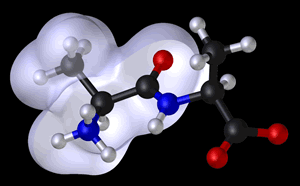As chemists, biologists, physicists, and other scientists continue to unveil nature's secrets, a flood of facts accumulates with stunning momentum. Each answer is a new beginning— material for new experiments. Many researchers assert that there's never been a more exciting time to be a scientist. After much effort was spent in the last century finding individual puzzle pieces, scientists can now revel in the process of fitting the pieces together.
Not that everything's been figured out— not by a long shot. The science of today beckons researchers to think big—to integrate singular items, and even single pathways—into the grander scheme of what it is that makes entire organisms tick with such precision.
Perhaps ironically, as science grows larger in scope and broader in focus, some of the most promising tools to synthesize the hows, whats, and wheres of human biology are exceedingly tiny. Micromachines, tiny biosensors, and miniature molecular reaction vessels will undoubtedly be standard items in a chemist's toolbox in 10 or 20 years.
 Unraveling—and making sense of—the genetic instructions that spell life for organisms as diverse as flies, plants, worms, and people has sparked a most exciting revolution. Every minute of every day, scientists all over the world work feverishly, weaving a compelling tale of the chemistry that underlies our health.
Unraveling—and making sense of—the genetic instructions that spell life for organisms as diverse as flies, plants, worms, and people has sparked a most exciting revolution. Every minute of every day, scientists all over the world work feverishly, weaving a compelling tale of the chemistry that underlies our health.
It's all very exciting, but the progress mandates still more work. Much more work! Among the questions still awaiting answers are these:
How do the 6-foot long stretches of DNA in every cell in our bodies know how to keep our biochemical factories running smoothly?
Who will find a way to outwit resistant bacteria?
When will someone figure out how to fight disease by manipulating the intricate sugar coatings on our cells?
Who will invent the tools that will revolutionize chemistry labs of the future?
What unexpected places hold treasure troves for new medicines?
No comments:
Post a Comment